Endless Space – Review
by Mark
|
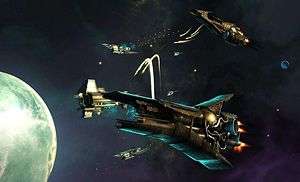 There have been a fair number of poorly-produced (see Sword of the Stars 2 and Legends of Pegasus) games out on the market recently, so when I saw screenshots of Endless Space I was pretty excited. I jumped into the game way back when it was in alpha, buying up a copy Minecraft style to see the game progress from what was a pretty polished alpha, to a slightly buggy beta, and what now appears on the surface to be an interesting take on the 4x turn based strategy. Still does it live up to other games in the genre, is it the space Civilization or just another poorly-thought-out and produced throw-away game?
There have been a fair number of poorly-produced (see Sword of the Stars 2 and Legends of Pegasus) games out on the market recently, so when I saw screenshots of Endless Space I was pretty excited. I jumped into the game way back when it was in alpha, buying up a copy Minecraft style to see the game progress from what was a pretty polished alpha, to a slightly buggy beta, and what now appears on the surface to be an interesting take on the 4x turn based strategy. Still does it live up to other games in the genre, is it the space Civilization or just another poorly-thought-out and produced throw-away game?
Paris based developers, Amplitude Studios, produced Endless Space using their Game2Gether model. With Game2Gether gamers could get involved in the development process right from the start, so think of it as something like Kickstarter meets the Minecraft model, but with better player feedback in that it’s very much like Minecraft’s development model, but with a larger focus on community driven development.
In any case the game itself is a pretty standard 4x turn-based strategy game. Much like Civilization, there isn’t much in the way of an over-arching story beyond why the various playable factions are going about their galactic dominations. The first civilisation known to the current races were the Endless and, long gone from the galaxy, their only remnant, a substance known as dust, is now one of the core resources traded between the various races. The myriad of factions available in Endless Space is definitely one of its strong points. From the classic human race, in this instance depicted as the tyrannical and maybe a little evil United Empire, to the Sowers, a race of machines created by the Endless to seed life in the galaxy, converting dead worlds to new lush paradise, we have eight very varied factions.
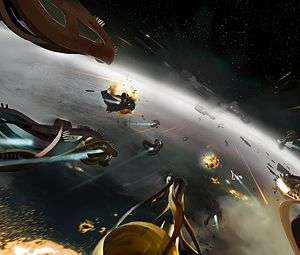 On a side note, my favourite – just in terms of background – are the Horatio; an incredibly-rich man named only as Horatio took to the stars and, upon finding Endless cloning technology, got bored and decided to make himself some friends. Soon after, he decided that the whole galaxy would look a lot better if they looked just like him and so he turned his hand to galactic conquest, backed by an army consisting of his… very… extended family. I’ll leave you to make your own CSI Miami jokes.
On a side note, my favourite – just in terms of background – are the Horatio; an incredibly-rich man named only as Horatio took to the stars and, upon finding Endless cloning technology, got bored and decided to make himself some friends. Soon after, he decided that the whole galaxy would look a lot better if they looked just like him and so he turned his hand to galactic conquest, backed by an army consisting of his… very… extended family. I’ll leave you to make your own CSI Miami jokes.
Where the game really stands out is in the ability to create your own factions. If you like the look of the ships of the United Empire but want the Sowers ability to colonise and terraform any type of planet, you can pick and choose the abilities you want.
Like many other 4x games, the main focus is around randomly generated sandbox maps. There is no singleplayer campaign here, but this isn’t anything new in games of this type. Games are set up using a number of victory conditions like military (winning the game by crushing your enemy) or technology (becoming the most advanced race in the galaxy) and options such as turning pirates off or changing the size of the map. At their peak, the games can run eight empires in a galaxy of eighty systems. Now before you say, “wow Zero that sounds epic”, I have unfortunately found that even on my very decent computer, the game does start to slow down. This can mean that when you are waiting for your turn, it can take quite a bit of time, time which mounts up when you are quickly trying to get through ten turns.
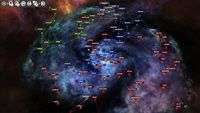 |
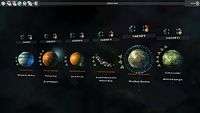 |
 |
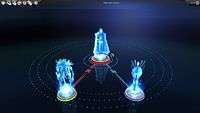 |
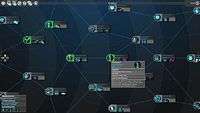 |
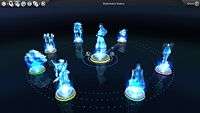 |
So as I’ve said, the main aim of the game is to conquer your respective galaxy, and achieving a victory through one of the multiple victory conditions. Each player starts with one system as well as a home planet, and from there they’d build their intergalactic empire. The developers really have thought of everything in terms of planetary types, which range from the standard Earth-like planet to the Hoth-like artic. The system menu will provide you with details of each of the planets in the system and even though you won’t be going down to micromanagement level on the planets (nothing beyond deciding if that planet should be an industrial, research, trade or food production base) this area will provide you with an overview of how that system is getting on. Here new ships are created and improvements researched to help boost the productivity or happiness of your system.
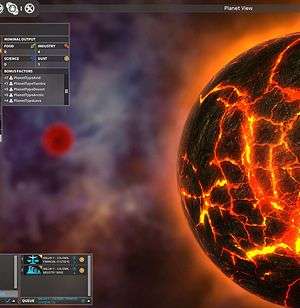 Adding an additional level of customisation to the gameplay, the player can also recruit heroes using a small dust payment and a small upkeep fee. Heroes can dramatically improve the performance of systems or fleets and have a number of skills which make them vital to ruling the galaxy. For example, you may have just started the game and want to get to an early start producing a fleet. However, early on your system will not have a very high level of production, and building ships can take a large number of turns. Recruit a hero who is a fleet commander as well as an administrator and slot them into your system, however, and suddenly you have a decent production boost and a commander for your fleet (when it is ready) who will give numerous stat bonuses. This is one of my favourite tactics in the early stages, and usually gives you a bit of a head start. Each hero levels up as the game progresses, giving them access to a number of additional abilities that increase the stat bonuses they have in fleets and systems, all of which gives you that edge when you eventually reach combat.
Adding an additional level of customisation to the gameplay, the player can also recruit heroes using a small dust payment and a small upkeep fee. Heroes can dramatically improve the performance of systems or fleets and have a number of skills which make them vital to ruling the galaxy. For example, you may have just started the game and want to get to an early start producing a fleet. However, early on your system will not have a very high level of production, and building ships can take a large number of turns. Recruit a hero who is a fleet commander as well as an administrator and slot them into your system, however, and suddenly you have a decent production boost and a commander for your fleet (when it is ready) who will give numerous stat bonuses. This is one of my favourite tactics in the early stages, and usually gives you a bit of a head start. Each hero levels up as the game progresses, giving them access to a number of additional abilities that increase the stat bonuses they have in fleets and systems, all of which gives you that edge when you eventually reach combat.
As you progress through the four research trees you will eventually unlock new weapons and ship classes. Each ship can be customised by the player, allowing you to optimise the military power (an actual stat in the game) and create some immensely-powerful craft. Sadly, each race only has six ship types and this does make the ability to create custom ships a little bland. If you had thoughts of taking the beautiful smooth lines of a Sophon ship and loading it up with twenty gun turrets, think again. No matter how you edit the load-out of the ship, the model never changes. While I understand this from a design standpoint, like I said, it does make the option to customise just a little redundant, but then I’m a very visual person.
Speaking of which, this has got to be one of the sexiest games I’ve played in a long time. The ship models, limited as they are, do look incredible. The system menu pulls up models of each of the planets in that system, and every one is incredibly detailed, updating as improvements are added. Even the UI, something which many people just don’t pay much attention to, is incredibly slick and clean. Moving between system menus is seamless and without any loading. There isn’t much more to say about it really; you will see from the screenshots just how beautiful this game is, and when run on the ‘Fantastic’ setting it is superb. There are areas I would have expected a bit more detail in, for example the main galaxy map can be a little sparse compared to the rest of the game and, when in combat, some of the ship explosions need some work (think Death Star in Return of the Jedi)
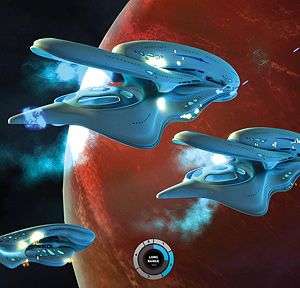 When looking at the combat in Endless Space, you have to remember that this isn’t fast-paced fighter combat. The ships are large, they are slow, and they don’t turn on a dime. What Amplitude have done is to create truly-cinematic combat in a 4x game. Combat is broken down into phases: long, medium and close. During each of these phases the player can lay down a battle action, which range from things like weapon disruption – an ability which, as you would imagine, weakens the enemies weapons; to camouflage, which effectively makes your ships harder to hit. The enemy player will make their own tactical choices and you may find that their battle action counters your own. The winner of the battle action in each phase gains a bonus and this in turn means that, even if you have a hugely-powerful fleet, the fleet can be defeated by a smaller force with the luck of the draw, as I found out while tweeting and forgetting to use my battle actions.
When looking at the combat in Endless Space, you have to remember that this isn’t fast-paced fighter combat. The ships are large, they are slow, and they don’t turn on a dime. What Amplitude have done is to create truly-cinematic combat in a 4x game. Combat is broken down into phases: long, medium and close. During each of these phases the player can lay down a battle action, which range from things like weapon disruption – an ability which, as you would imagine, weakens the enemies weapons; to camouflage, which effectively makes your ships harder to hit. The enemy player will make their own tactical choices and you may find that their battle action counters your own. The winner of the battle action in each phase gains a bonus and this in turn means that, even if you have a hugely-powerful fleet, the fleet can be defeated by a smaller force with the luck of the draw, as I found out while tweeting and forgetting to use my battle actions.
Sadly though, while cinematic, the ‘manual’ combat in the game does become slightly repetitive. The combat itself is all scripted, with the player only really being able to set out their battle actions and watch the show. This is fine, I wasn’t looking for it to allow me to take over a gunner position, but once you have watched the same ship movements for the thirtieth time, you start to just click the ‘auto’ button and by turn four-hundred it is highly unlikely that you will even bother watching the combat at all.
Pros- Cinematic combat
- Incredible UI navigation
- Just so god damned pretty
- That theme song
- Not enough ships
Endless Space is the high-quality debut from Amplitude Studios, taking their new development model and produced something that is on the same level as many AAA titles out there. Is it a competitor for Civilisation? For a sci-fi fan, yeah I really think it is. I still think the game really cries out for some kind of expansion or DLC though; there needs to be more ships, combat has to be upgraded to at least add in a few new combat animations and they really need to add a couple more songs beyond the main theme which, while 'nice', is slowly driving me insane. To produce something of this quality on their first outing is something Amplitude should be praised for, especially considering the quality of other games in the genre recently. If you are a fan of Civilization or Galactic Civilizations this is one to play.
Last five articles by Mark
- I Have A Problem
- Total War: Warhammer - Review
- Rainbow Six Siege - Review
- Mordheim: City of the Damned - Review
- Star Wars: Battlefront - Review















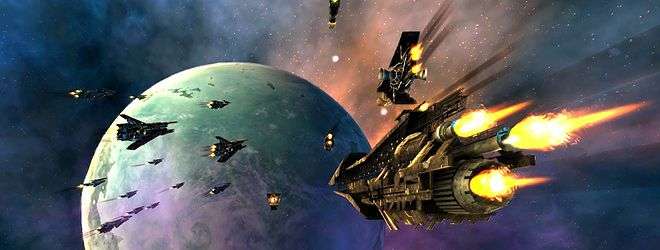
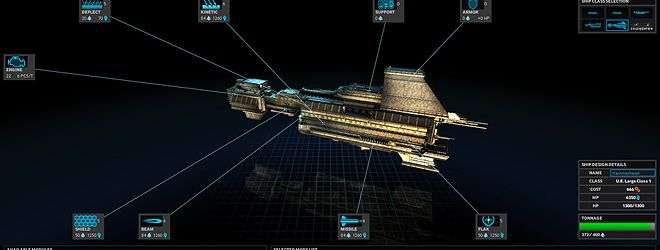






There are no comments, yet.
Why don’t you be the first? Come on, you know you want to!